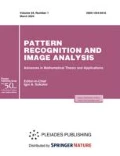Abstract
A coordinated ranking as an opinion of an expert group can be represented by the well-known Kemeny’s median. Such a decision is a least different from other rankings, and is free of some contradictions of the majority rule problem. As a mathematical principle, the Kemeny’s median gives a decision in any case, in particular, for conflicting experts or groups. In practice, competing opinions are usually identified, and special procedures are used to achieve the required level of consensus. One known approach consists in assigning weights to expert opinions. In this paper, the correct mathematical basis is formulated for new types on the Kemeny’s median, like metric and weighted ones. The problem to find the median for a linear combination of expert rankings is investigated based on the well-known locally optimal Kemeny’s algorithm. It is proposed to investigate the rank aggregation problem based on new types of the median.
Similar content being viewed by others
REFERENCES
J. Kemeny and J. Snell, Mathematical Models in the Social Sciences (Blaisdell, New York, 1963).
J. Kemeny, “Mathematics without numbers,” Daedalus 88 (4), 577–591 (1959).
B. G. Litvak, Expert Information: Methods of Acquisition and Analysis (Radio i Svyaz’, Moscow, 1982) [in Russian].
Y. Jiao, A. Korba, and E. Sibony, “Controlling the distance to a Kemeny consensus without computing it,” Proc. Mach. Learn. Res. 48, 2971–2980 (2016).
I. Charon, A. Guenoche, O. Hudry, and F. Woirgard, “New results on the computation of median orders,” Discrete Math. 165–166, 139–153 (1997). https://doi.org/10.1016/S0012-365X(96)00166-5
V. D. Nogin, Reducing of Pareto Set: An Axiomatic Approach (Fizmatlit, Moscow, 2016) [in Russian].
O. I. Larichev and E. M. Moshkovich, Qualitative Methods of Decision Making. Verbal Analysis of Decisions (Nauka, Moscow, 1996) [in Russian].
A. Davenport and J. Kalagnanam, “A computational study of the Kemeny rule for preference aggregation,” in AAAI’04: Proceedings of the 19th National Conference on Artificial Intelligence (2004), pp. 697–702. https://aaai.org/Papers/AAAI/2004/AAAI04-110.pdf
V. Conitzer, A. Davenport, and J. Kalagnanam, “Improved bounds for computing Kemeny rankings,” in AAAI’06: Proceedings of the 21st National Conference on Artificial intelligence (2006), Vol. 1, pp. 620–626. https://www.aaai.org/Papers/AAAI/2006/AAAI06-099.pdf
S. D. Dvoenko and D. O. Pshenichny, “On metric correction of matrices of pairwise comparisons,” JMLDA 1 (5), 606–620 (2013) [in Russian]. https://doi.org/10.21469/22233792
S. D. Dvoenko and D. O. Pshenichny, “Optimal correction of metrical violations in matrices of pairwise comparisons,” JMLDA 1 (7), 885–890 (2014) [in Russian]. https://doi.org/10.21469/22233792.
S. D. Dvoenko and D. O. Pshenichny, “A recovering of violated metrics in machine learning,” in Proc. 7th Symposium on Information and Communication Technology (SoICT’16) (ACM, 2016), pp. 15–21. https://doi.org/10.1145/3011077.3011084
S. D. Dvoenko and D. O. Pshenichny, “On metric correction and conditionality of raw featureless data in machine learning,” Pattern Recognit. Image Anal. 28 (4), 595–604 (2018). https://doi.org/10.1134/S1054661818040089
S. Dvoenko, and D. Pshenichny, “On a metric Kemeny’s median,” in IDP 2016: Intelligent Data Processing, Ed. by V. Strijov, D. Ignatov, and K. Vorontsov (Springer, Cham, 2019), pp. 44–57. https://doi.org/10.1007/978-3-030-35400-8_4
S. D. Dvoenko, “Clustering and separating of a set of members in terms of mutual distances and similarities,” Trans. MLDM 2 (2), 80–99 (2009).
S. Dvoenko and J. Owsinski, “The permutable k-means for the bi-partial criterion,” Informatica 43, 253–262 (2019). https://doi.org/10.31449/inf.v43i2.2090
B. G. Mirkin, The Problem of a Group Choice (Nauka, Moscow, 1974) [in Russian].
G. Young and A. Housholder, “Discussion of a set of points in terms of their mutual distances,” Psychometrica 3 (1), 19–22 (1938).
W. Torgerson, Theory and Methods of Scaling (John Wiley, New York, 1958).
Funding
This investigation is supported by the Russian Foundation for Basic Research (RFBR) under grants 20-07-00055, 18-07-01087, 18-07-00942.
Author information
Authors and Affiliations
Corresponding authors
Ethics declarations
The authors declare that they have no conflict of interests.
Additional information

Sergei D. Dvoenko received Dr. Sci. (Phys.-Math.) in 2002 at the Dorodnitsyn Computing Center of the Russian Academy of Sciences (CC of RAS) in the field of Theoretical Foundations of Informatics (05.13.17 of RAS) with the thesis “Pattern Recognition Methods for Arrays of Interconnected Data,” received Ph. D. in 1992 at the Institute of Control Sciences of the Russian Academy of Sciences (ICS of RAS) in the field of Computer Sciences (05.13.16 of RAS) with the thesis “Learning Algorithms for Event Recognition in Experimental Waveforms.” He is a professor at the Tula State University, Russia. Research interests are machine learning and pattern recognition, cluster-analysis and data mining, image processing, hidden Markov models. He is a member of the Russian Association for Pattern Recognition and Image Analysis (RAPRIA).

Denis O. Pshenichny completed postgraduate studies at the Tula State University, Russia. He is an assistant lecturer at the Tula State University. Research interests are machine learning and pattern recognition, immersing data of pairwise comparisons in a metric space. He is a member of the Russian Association for Pattern Recognition and Image Analysis (RAPRIA).
Rights and permissions
About this article
Cite this article
Dvoenko, S.D., Pshenichny, D.O. Rank Aggregation Based on New Types of the Kemeny’s Median. Pattern Recognit. Image Anal. 31, 185–196 (2021). https://doi.org/10.1134/S1054661821020061
Received:
Revised:
Accepted:
Published:
Issue Date:
DOI: https://doi.org/10.1134/S1054661821020061




